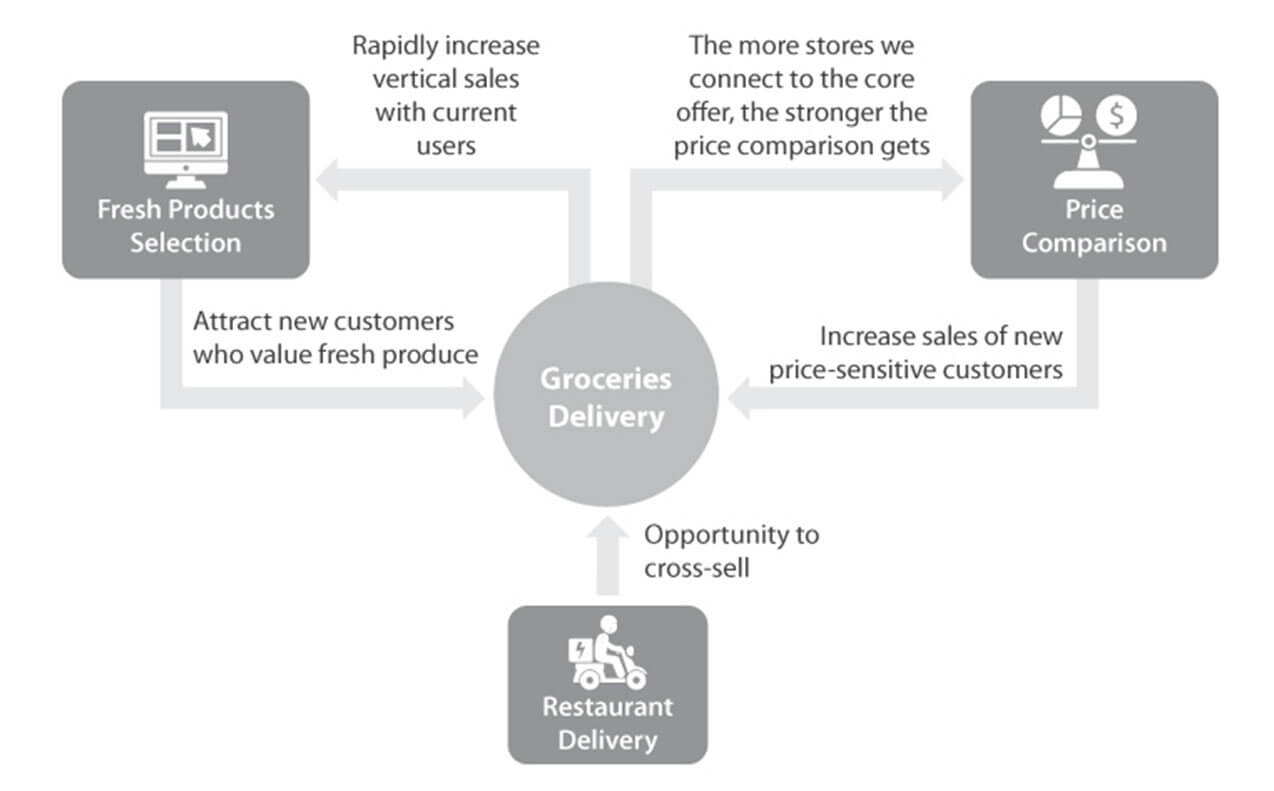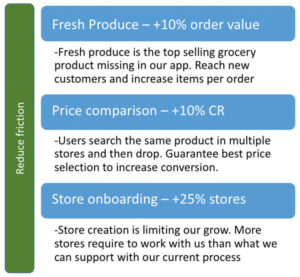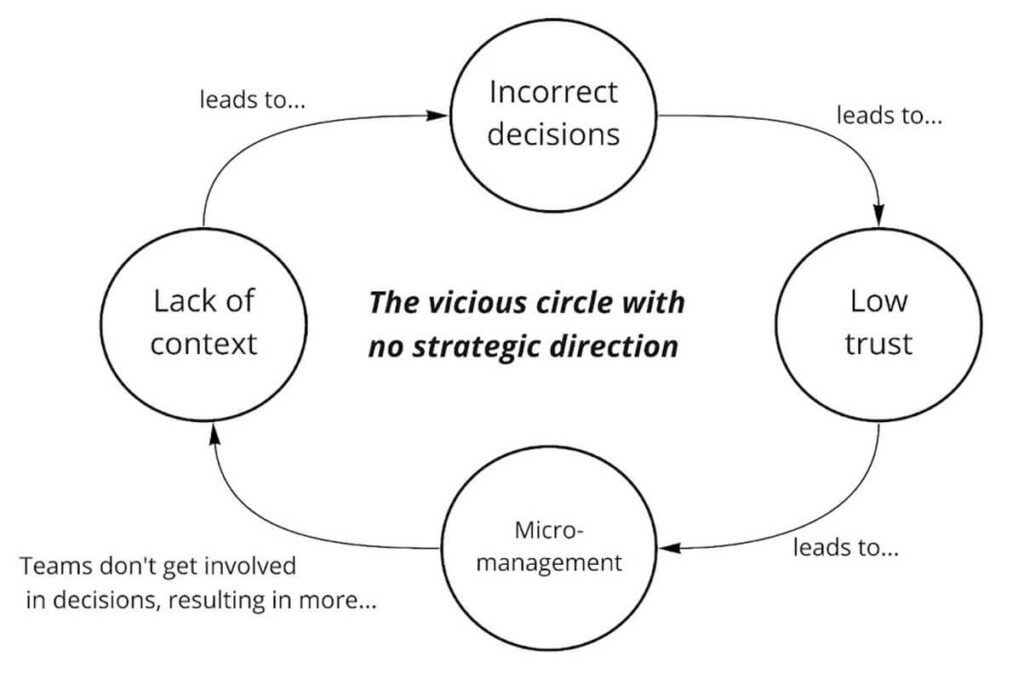In this post, you’ll discover the product strategy framework I’ve synthesized from years of working in product management and outlined in my book, Product Direction.
This framework has helped me and many clients scale successful products with successful strategies.
A word of caution. This is not a step-by-step recipe, nor is it a fill-in-the-blank template. There are some out there, but they will hurt your strategic thinking and ability to create successful products in the long run.
Instead, this framework outlines the phases and core activities that everyone goes through when creating product strategies.
Overwhelmed with customer feedback? Try Feature Upvote.
We make easy-to-use feedback boards that let your customers submit and upvote feature requests – all in one place.
4 steps to a successful product strategy framework
The following product strategy framework contains four steps: Insights, Select, Goals and Assumption, and Synthesize.
The framework also requires some prep work. You’ll need to gather information to create an evidence-based strategy. And there’s a final stage I call “communicate” in which you make sure that the strategy is distributed, understood, and used for day-to-day decision-making.
Let’s dive in.

Step 1 – Insights
Central to a good product strategy is having the right insights – identifying a particular problem, trend, or opportunity that can change the game.
Our goal in this stage is to generate and visualize as many valuable insights as possible. We’ll choose the most promising opportunities later.
Insights aren’t some sort of revelation only reserved for enlightened or creative people – those capable of devising how consumers will behave in the future. Insights come in all forms and shapes.
If you are not particularly creative or inspired, don’t panic. There are several tools that will help you identify great opportunities.
The opportunity solution tree is an example of a tool that can help you organize and discover insights. Created by Product Discovery coach Teresa Torres, it helps organize discovery options and create alternatives for each desired outcome. And while it was not created to be a strategy tool, it can help you diversify your thoughts.
Here’s how it goes.
To start, define your desired outcome and use it as the root node of the tree. This can be the company’s high-level goal.
You could also list several of your preferred outcomes since you are trying to explore many directions at this moment. For each outcome, you will create several opportunity nodes by thinking through the options that will move you toward that result. Those are the expected insights.
Let’s illustrate with a ridesharing app. The product team’s desired outcome is “increased security”.

The high-level opportunities might be “increased driver’s background information”, “share location”, and “add passenger tools for emergencies”. We might include “increase automated monitoring” and “emergency alerts” as lower-level opportunities for passenger emergencies.
Without a tool like the opportunity solution tree, we can grab the first option we come up with and fail to consider further alternatives. This method helps us identify a wide range of opportunities and find alternative paths to the outcome.
Step 2 – Select
Selecting is the step in which you narrow all those insights down to the most promising. At this stage, it is important you consider not only the opportunity but also the trade-offs of pursuing it.
Prioritization is not about “value” over cost. It is about focus and positioning. You want to create alignment toward the differentiation you wish to have to win in the market based on the insights and opportunities detected.
When Apple created services like Apple Music, Apple Books, iCloud, and so on, it strengthened the sales of their devices and their use.
For example, by storing iPhone photos in iCloud, Apple made the phone more valuable to their users. They enabled automatic backups, the ability to share with other iPhone users, and syncing their photo library with other devices like their iPad.
The same would be true of a grocery delivery app deciding between adding restaurant delivery as a service or adding more categories to their catalogue.
Both alternatives would allow cross-selling to existing customers. But adding new product categories would also have the advantage of attracting new customers. These will immediately start consuming other groceries that are part of the app’s core value proposition. This synergy strengthens their positioning.

Step 3 – Goals and Assumptions
Now that you have selected your strategic paths, you want to create goals.
There are many good methods to set goals. The important part is that you take the time to reflect on what you consider to be a success for each of your strategic drivers and make it explicit.
Also, think through what needs to be true for those outcomes to be possible—your strategic assumptions. By making assumptions explicit, you allow teams to experiment and do early validations of your strategy, pivot faster, and maximize your chances of success.
For example, take an e-commerce product team working on the following problem: “Our results page takes six seconds to load. We have the opportunity to reduce it below two seconds to beat the industry benchmark and improve conversion.”
By choosing this path, the team is making a series of assumptions:
- Users will perceive the change against your competitors and they will prefer your product for this reason.
- More users will end up buying because of your quick load time, thus improving your conversion.
- You can make your current load time decrease by 66% (from 6 to 2 seconds).
Prioritizing and making these assumptions visible gives you the chance to know if they are true early in the process, instead of waiting 12 months until “your strategy is done”.
Step 4 – Synthesize
The final step is making your strategy clear and memorable.
As a result of all the previous steps, you probably have a large document, many slides, or a myriad of diagrams. While all are good and needed for in-depth communication, this step is about creating a one-pager that you can keep at hand.
An easy way to synthesize your strategy is to use the drivers model.
List one to three of your drivers along with their strategic outcome and a few lines describing why they’re an essential opportunity.
Here’s an example for a groceries delivery app:

While you would have much more information about the details and reasons for these drivers, having the one-pager allows you to pull it up at any decision point and make aligned decisions systematically.
What is a product strategy? (3 winning elements)
Your product strategy will build the bridge between your vision and your expected outcomes. It is a combination of:
- a diagnosis of your current situation
- a selection of problems and opportunities you are focusing on
- a set of guidelines for execution
Here are three characteristics of a good strategy-
1. Differentiation
Of the many roads we could take, we choose the one that will differentiate our value proposition in the customer’s mind.
The product team will not be the only part of the company working toward that goal:
- The marketing team will create messaging that supports this strategy
- The operations team will focus on the required flows to deliver this value
- The supply team will negotiate commercial agreements needed to make it all possible.
The alignment of the entire organization multiplies the value of the experience offered to the customer.
2. Focus
People think focus means saying yes to the thing you’ve got to focus on. But that’s not what it means at all. It means saying no to the hundred other good ideas that there are.
Steve Jobs
A solid strategy helps us make good decisions about what we say yes to and what we need to reject.
Furthermore, Richard Rumelt says in his book Good Strategy, Bad Strategy:
Good strategy works by focusing energy and resources on one, or a very few, pivotal objectives whose accomplishment will lead to a cascade of favourable outcomes.
This selection of a few critical topics is the focus you need to align the company and succeed.
3. Guidance
Our strategy should be actionable. Teams should be able to make decisions based on it. I call it “the right flight level”.
Some companies would call strategy a very high-level goal, like “double sales by the end of the year.” This “high flight level” does not help the team identify the right direction, nor does it provide any guidance to achieve it.
Other companies like to use a “list of 50 strategic projects for the year” as the basis for their strategy. This type of “low flight level” goes against the principles of autonomous and outcome-oriented teams. It discourages learning, innovation, and accountability.
Good strategy provides enough context to guide the teams while allowing room for discovering the right things to reach goals.
Why does your business need a product strategy?
No one has ever said: “we don’t need to be strategic”. But while we all agree we need a strategy, do we understand why we need it?
Here are the 2 most critical benefits of a solid product strategy:
Alignment
Without strategy, we only have vision and actions.
Teams will try to achieve the vision in whatever way they consider effective. You will end up with teams pulling in different directions – making little progress through much effort.
With the right strategy, all teams focus on reaching the vision through a single path. With a shared understanding of the direction, each initiative helps not only the product team but also other teams working on related elements – providing a multiplying effect.
Furthermore, teams gain the focus they need to concentrate on the options that would make a difference and enhance the value proposition and positioning they want to create.
Team empowerment
When teams have no strategic context, their decisions may not align with what upper management expects. It results in a lack of trust and more micromanagement. It hurts the team’s autonomy and the company’s ability to innovate. If you end up in this situation, the fault is in senior management, not the team.

A solid strategy will provide teams with the required context, helping them progress toward the company’s desired direction, making better product decisions, gaining more trust, and thus generating a virtuous circle to secure even more autonomy.
This autonomy fosters both accountability and motivation to achieve even higher results.


